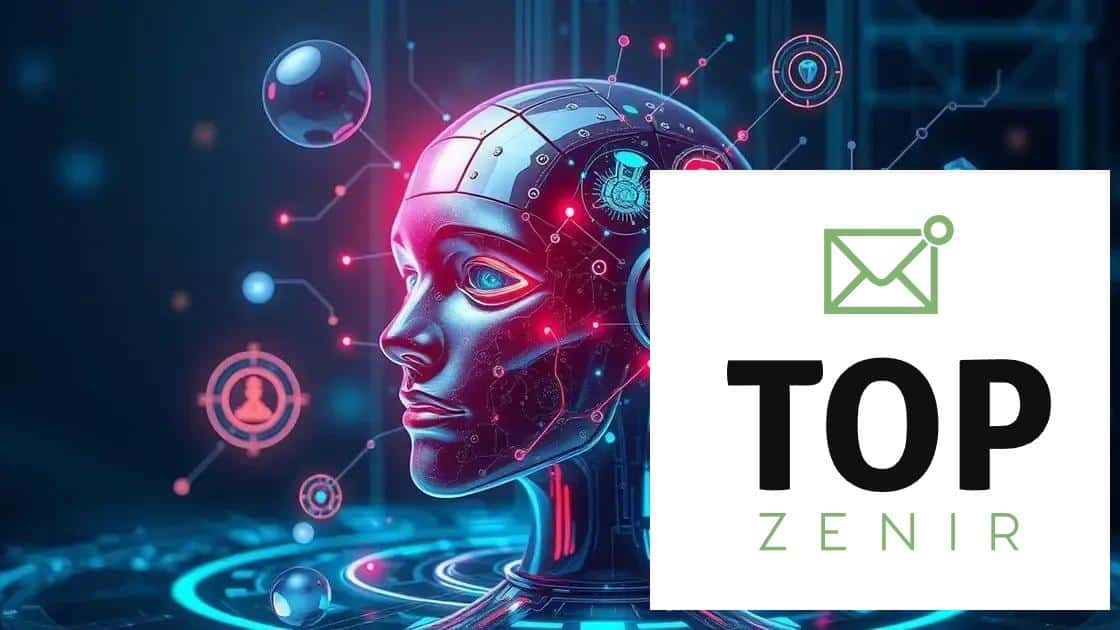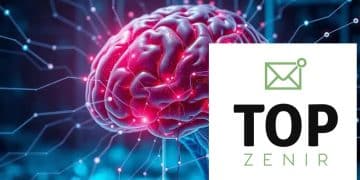OpenAI prepares to launch GPT-5 in May 2025

OpenAI prepares to launch GPT-5 in May 2025, featuring enhanced language understanding, multimodal capabilities, and improved personalization, marking a significant advancement in AI technology across various industries.
OpenAI prepares to launch GPT-5 in May 2025, and it’s stirring up quite the buzz. Are you ready to understand the pivotal changes this new version will bring to the AI landscape?
What to expect from GPT-5’s features
With the anticipated release of GPT-5, many tech enthusiasts are eager to discover its features. This new version promises advancements that can change how we interact with AI.
Enhanced Language Understanding
One of the standout features of GPT-5 is its improved language understanding. It will offer more contextually aware responses, making conversations feel more natural. This will allow users to engage in deeper discussions without losing the thread of context.
Increased Multimodal Capabilities
An exciting addition is the support for multimodal inputs. GPT-5 can process not only text but also images, making it more versatile. This capability can enhance various applications, from education to content creation.
- Combine text and visuals seamlessly.
- Improved accessibility for users with different needs.
- Richer interactions for creative tasks.
As GPT-5 rolls out, developers will find it easier to build applications that can leverage these features. Imagine communicating with a program that can interpret both your text commands and visual cues!
Improved Personalization
Another exciting feature of GPT-5 is its ability to personalize interactions. Users will notice that the AI can remember previous conversations and tailor responses accordingly. This means that your interactions will become more relevant and helpful over time.
Such personalization leads to improved learning from user interactions, ultimately increasing efficiency. The improvements also lay the groundwork for better recommendations based on user preferences.
In essence, the features expected in GPT-5 represent significant steps forward in AI development, aiming to create more engaging and effective user experiences.
How GPT-5 differs from previous versions

Understanding how GPT-5 differs from previous versions is crucial for users and developers alike. This latest iteration brings significant changes that enhance performance and usability.
Advanced Learning Techniques
One notable improvement in GPT-5 is its use of advanced learning techniques. These methods allow the AI to better understand context and nuances in language. The AI can now process and respond to more complex queries.
These enhancements lead to richer, more meaningful interactions. Users will notice fewer misunderstandings, making conversations flow more smoothly.
Greater Contextual Awareness
A key feature is enhanced contextual awareness. Previous versions had limitations in retaining context over long conversations. With GPT-5, the model can maintain the thread of discussion more effectively.
- More relevant responses based on earlier dialogue.
- Improved ability to handle multi-turn conversations.
- Less repetition and more contextual variety.
This means users can engage in deeper discussions without needing to repeat themselves. The model becomes a more reliable conversational partner.
Broader Knowledge Base
GPT-5 also comes with a much broader knowledge base, having been trained on more diverse data sources. This update allows the AI to provide more accurate and timely information.
The integration of real-time data can significantly improve response quality. As a result, users are more likely to receive relevant details for their inquiries.
In summary, the differences between GPT-5 and its predecessors reflect a leap towards more intelligent, context-aware AI that can engage users more effectively and deliver accurate information with ease.
Potential applications of GPT-5 in various industries
The potential applications of GPT-5 in various industries are vast and exciting. This advanced AI model brings new opportunities for innovation across many fields.
Healthcare
In the healthcare sector, GPT-5 can assist in patient communication and diagnostics. AI can analyze patient data and provide insights for better treatment options. This capability enhances doctors’ workflows and streamlines the decision-making process.
- Improving doctor-patient communication.
- Assisting in diagnostics and treatment planning.
- Offering personalized health recommendations.
By processing large amounts of medical literature, it can also keep healthcare professionals updated about new findings quickly.
Education
In education, GPT-5 has the potential to transform learning experiences. It can provide personalized tutoring, generate educational content, and assist teachers in lesson planning. As students interact with the AI, they receive tailored feedback based on their unique learning needs.
For instance, students can ask questions and get instant explanations, making the learning process more engaging.
Finance
The finance industry can benefit significantly from GPT-5’s data analysis capabilities. By processing financial reports, news, and market trends, the AI can assist in investment decisions and risk management.
Investors can use the AI to analyze patterns quickly, making it easier to identify lucrative investment opportunities.
Marketing and Customer Service
In marketing, GPT-5 can create tailored content for specific audiences based on data analysis. It can also enhance customer service through chatbots that provide quick and accurate responses to inquiries. This leads to improved customer satisfaction and loyalty.
Overall, the applications of GPT-5 span various industries, making the technology an essential tool for businesses looking to innovate and improve efficiency.
Challenges and considerations in using GPT-5
The use of GPT-5 comes with several challenges and considerations that users and developers need to be aware of. While this AI model offers exciting advancements, understanding its limitations is crucial.
Ethical Concerns
One significant challenge is the ethical use of AI. As GPT-5 becomes more integrated into decision-making processes, questions arise about bias and fairness. Users must be cautious to avoid perpetuating stereotypes or unfair practices. Ensuring transparency in AI-generated outputs is vital for maintaining trust.
- Monitor output for biased language.
- Implement guidelines for ethical usage.
- Educate users on AI limitations.
Addressing these concerns will be critical as organizations adopt AI technologies.
Data Privacy
Another challenge involves data privacy. When using GPT-5, sensitive information may be at risk. Users must ensure that data is handled securely. This includes being aware of how data is collected, stored, and used within AI systems. Adopting strong data protection measures is essential.
Organizations should prioritize securing data and complying with applicable regulations to maintain user trust.
Technical Limitations
Technical limitations also play a role. While GPT-5 boasts improved capabilities, it is not infallible. The AI may still generate incorrect or inappropriate content. Users should prepare for potential inaccuracies and have strategies to verify the information.
Continuous training and updates can help mitigate these risks, but users must remain vigilant.
Overall, navigating the challenges of using GPT-5 requires a proactive approach. Being aware of ethical concerns, data privacy, and technical limitations can help ensure responsible and effective AI usage.
What users are saying about GPT-5’s impact
User feedback on GPT-5 indicates a widespread enthusiasm for its capabilities. Many users report that this new version has significantly improved their interactions with AI.
Positive Experiences
Numerous users have shared their positive experiences, highlighting the model’s advanced understanding of context. They find that GPT-5 offers responses that feel more human-like and relevant. This improvement leads to more engaging conversations.
- Enhanced language comprehension.
- More accurate and relevant responses.
- Greater ease in handling complex queries.
Also, educators and students express excitement about the personalized learning experiences that GPT-5 provides. The ability to receive tailored explanations makes learning more enjoyable and effective.
Areas for Improvement
Despite positive feedback, some users mention areas for improvement. They note that while the AI is more capable, it can still produce inaccuracies. Users stress the need for verification of information provided by GPT-5.
Additionally, some have raised concerns about biases in outputs. They emphasize the importance of continued monitoring to ensure fairness and reliability in responses.
Overall Impact
Overall, users feel that GPT-5 has a positive impact on productivity and creativity. Many professionals report using the AI for brainstorming ideas and drafting content more efficiently.
This feedback suggests that as users become familiar with GPT-5, its integration into daily tasks will likely continue to grow, improving workflows across multiple domains.
The launch of GPT-5 marks a significant advancement in AI technology. Users appreciate its improved conversational abilities, contextual understanding, and personalized experiences. However, it is essential to address challenges such as ethical considerations and potential biases. Overall, GPT-5 can profoundly impact various industries, enhancing productivity and creativity. As users continue to explore its features, the AI’s role in daily tasks will likely expand, paving the way for even greater innovations in the future.
FAQ – Frequently Asked Questions about GPT-5
What improvements does GPT-5 offer compared to previous versions?
GPT-5 provides enhanced language understanding, better context retention, and more accurate responses, making interactions feel more natural.
How can GPT-5 be used in the education sector?
In education, GPT-5 can offer personalized tutoring, generate educational content, and assist teachers in lesson planning.
What are some challenges of using GPT-5?
Challenges include ethical concerns around bias, data privacy issues, and the potential for generating inaccurate content.
What are users saying about GPT-5’s impact?
Users report positive experiences with improved interactions, but they also emphasize the importance of monitoring for accuracy and bias.





